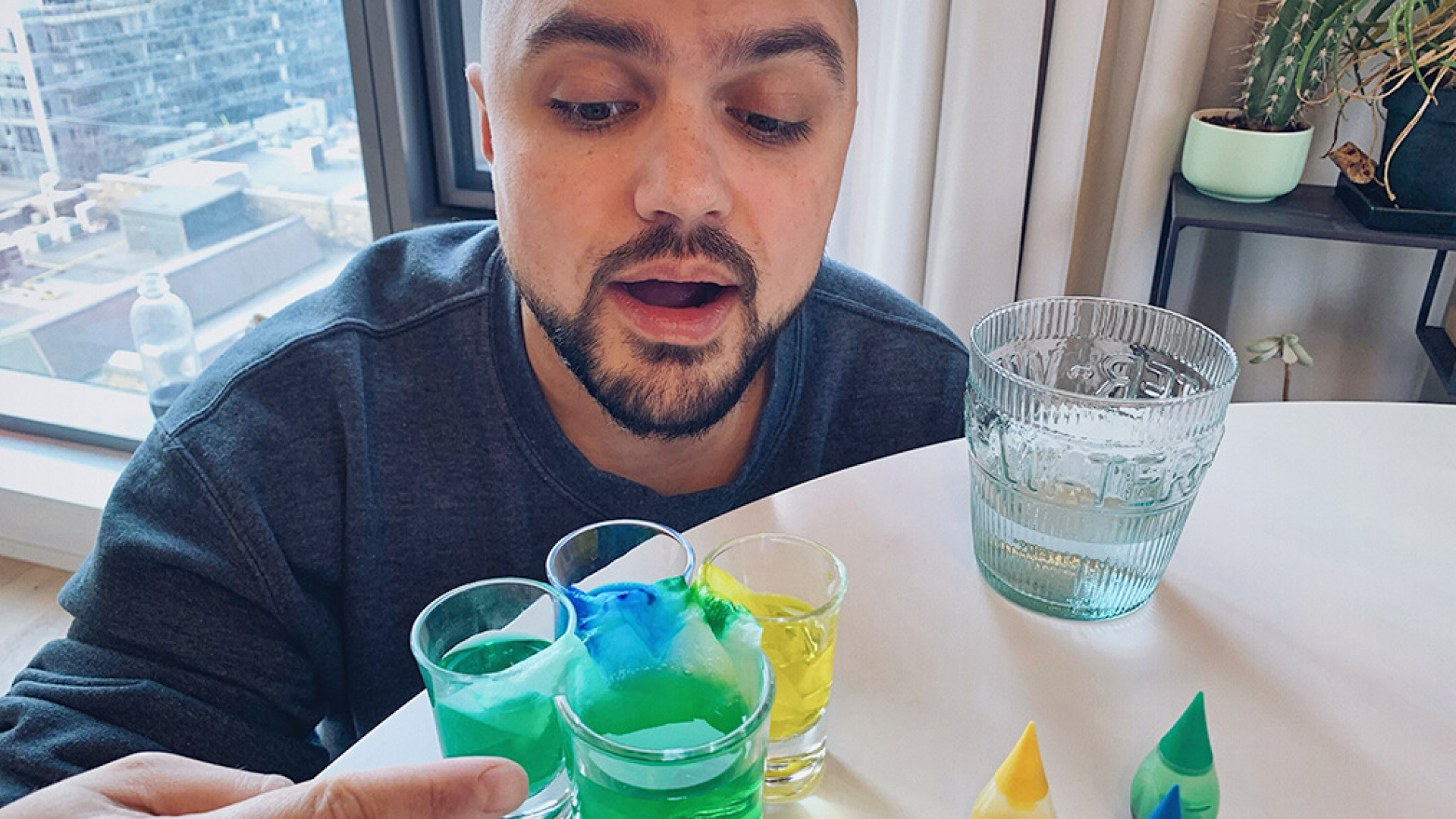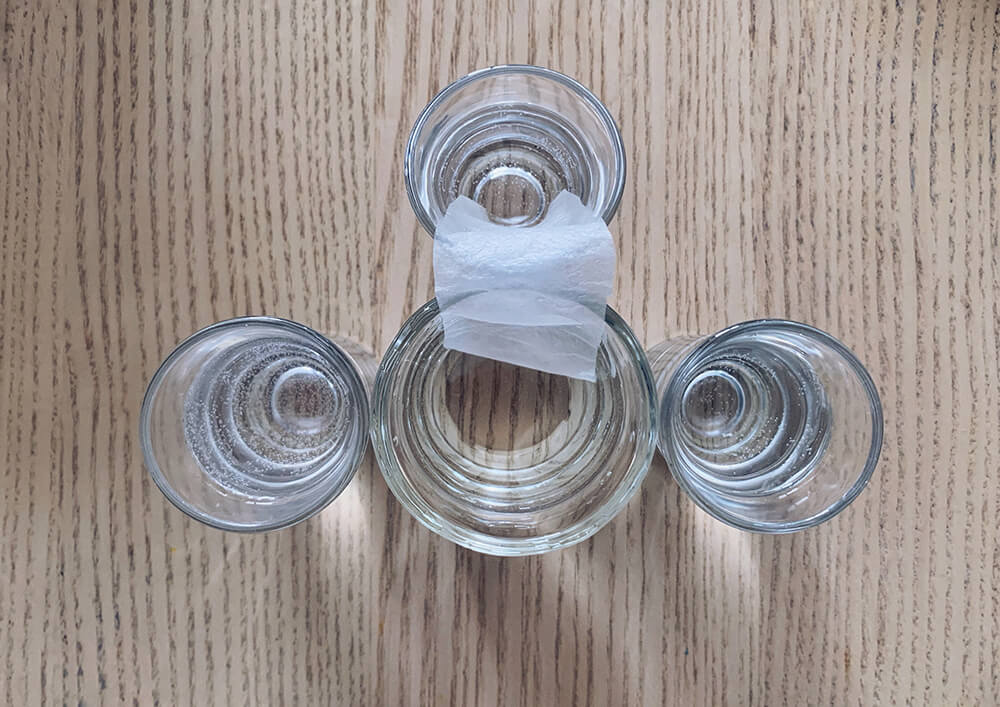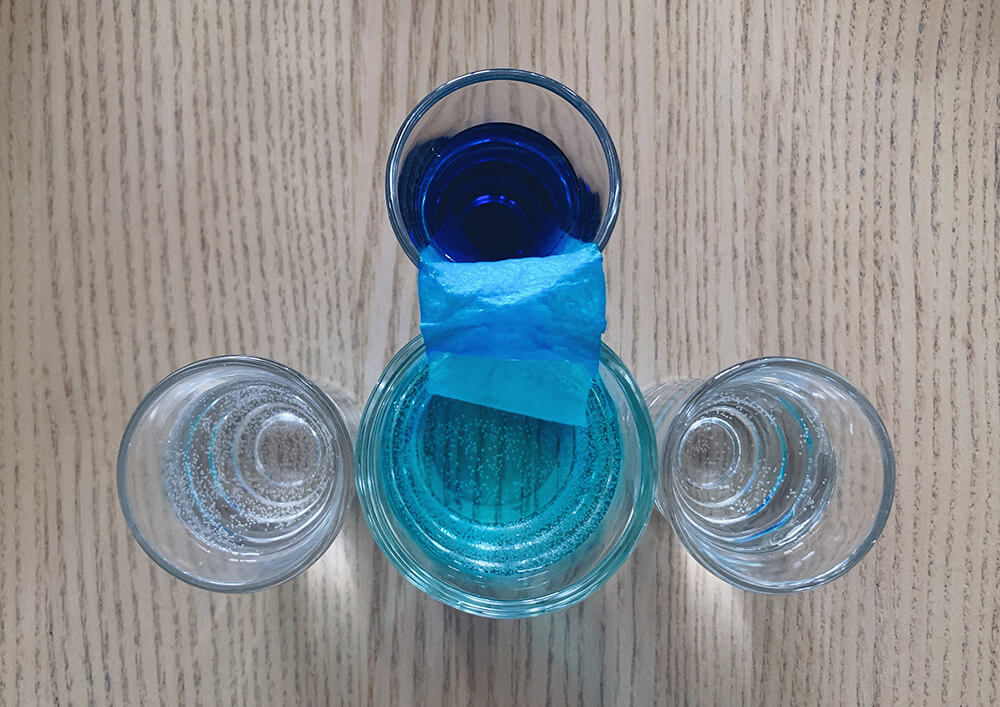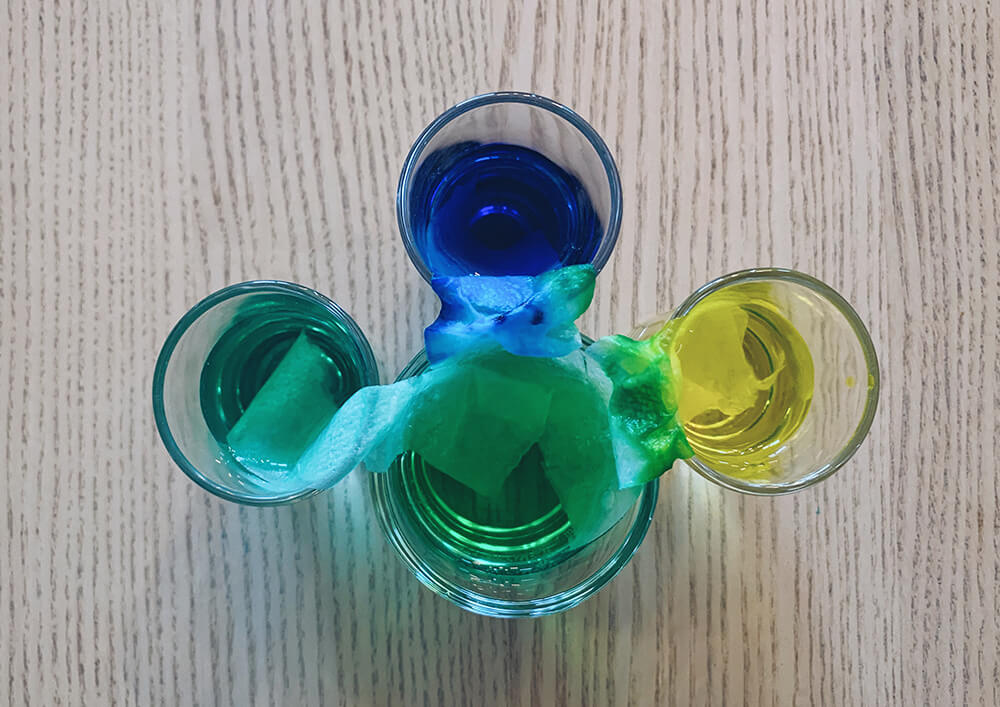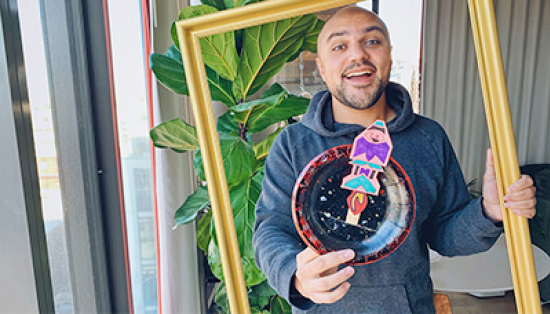Tune in every Tuesday at 2:00 pm on Instagram Live @ROMtoronto as ROM Kids Coordinator and Camp Director Kiron Mukherjee combines his passion for children’s education with storytelling to bring to life science, history and art for you and your loved ones in the comfort of your own home. Kiron will share activities, easy at-home crafts, behind the scenes anecdotes and fun facts—all connected to the ROM collections.
This time on the ROMKids Show we drink up on the world of water! Did you know that 71% of the world is covered in water, but only a very small amount of it is available to drink? Today Kiowa Wind Memorial Indigenous Youth Support Staff Justin Kewaquado joins us to talk about the importance of keeping our fresh water clean from pollution, and accessible to all communities. Then we’ll run an experiment to show how waste pollutes our waterways.
MATERIALS:
- water
- toilet paper
- food colouring
- small transparent containers
1. This is an easy experiment that can be really scaled up to take over your whole activity space! But be warned—this activity requires a lot of patience. You will need to leave the experiment out overnight to really see the effect. First, connect two containers filled with clear water with a small strip of toilet paper. I used one third of a piece of a toilet paper square to connect mine.
2. Then, in your first container, put in enough food colouring to saturate (full of colour) your container. Notice how the toilet paper absorbs the water, and the food colouring along with it. Is the colour starting to travel from the first container into the second? This represents how pollution at one source can impact water farther away from it, as the water way (the toilet paper) carries the pollution.
3. What happens if you add a third container, with a different colouring and connect it to you second container? Waterways like rivers and streams, run all over our planet, and connect with larger bodies of water like lakes and oceans. These waterways carry with them waste and pollution from higher up in the water system, resulting in lakes and oceans filling with pollution from far away.
4. Try connecting multiple containers together. Along the way connect water with coloring in it, and see how far the colouring travels, and the multiple dyes of food colouring mix together along the way.
As the ROMKids Coordinator & Camp Director, Kiron is the public face of the Royal Ontario Museum’s family and children’s programs. Kiron started volunteering at the ROM at age 14 and has never looked back. Though he majored in history at York University, Kiron also considers his early years as a ROMKids camper to be a highly formative part of his education. Now, he strives to provide engaging and educational kids’ programming so that future generations can look back on their ROM experiences as fondly as he has.

